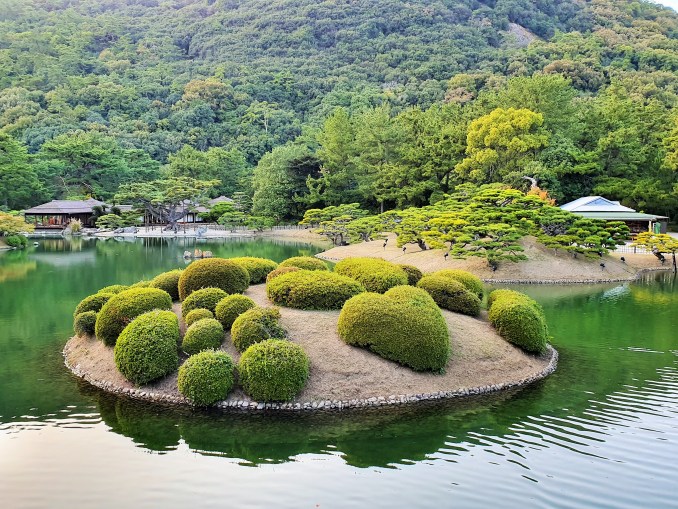During the last couple of months or so I happened to visit a couple of very beautiful Japanese gardens. While planning to share some photos with you all, I realized it is another great example for a comparison between Japan and France, yet in this case I should rather say, contrast.

I may not be a gardening expert and not even an enthusiast, but the truth is, Japanese and French gardens are so different, you would have to be blind not to see the obvious.



Please do not take any of this as a scientific source of information, but rather as an amateur account of an independent observer who happened to visit quite a few amazing gardens over a number of years.

Some, e.g. Dr. Hong-key Yoon, would even refer to two different geomentalities to explain the contrasting mindsets that lie behind a French or a Japanese garden design. Japanese gardens are more an imitation of nature, whereby the aim is to create something that looks like a piece of unspoilt nature, even though every plant, stream or stone is in a carefully selected place. A (formal) French garden, on the other hand, is all about reorganization of nature and taking control over it in bold and strict geometric shapes and forms.



Within the course of history, a formal French garden concept developed driven by passion, power, and ambition, what Monty Don has very nicely explained in his documentary mini-series about French gardens (you may still be able to find it on YouTube). The rich and powerful used garden as a tool to demonstrate their position and wealth and competed among themselves who’s garden will outdo whose. Just travel to Versailles, the Château de Vaux-le-Vicomte or any other of the numerous castles along the Loire Valley to witness the actual examples.

I mention Château de Vaux-le-Vicomte for a reason, it is said that its garden was something never seen before and what made the King Louis XIV really furious. Such ambition to outdo the king himself did not end well for the garden owner, Nicolas Fouquet, who spent the rest of his life in prison. At the same time, King Louis XIV took the garden designer (André Le Nôtre) and the crew and went on to build Versailles and its gardens to prove to the world he was the most powerful one after all.

“You can tell a lot about a person by looking at their garden. <…> and sometimes after looking at their garden, you’ll see that person in surprising new ways”. (Alice Steinbach, “Educating Alice”)

Back to Japanese gardens: as briefly mentioned earlier, Japanese gardens aspire to emphasize the beauty of nature and are designed following the principles of Zen Buddhist philosophy. They aim for harmony with nature and all elements are carefully combined to create a relaxing, tranquil and peaceful ambience.


One of the earliest sources about Japanese garden design is Tachibana no Toshitsuna’s Sakuteiki (Notes on Garden Design) dating back to 11th century or so. Already at that time it was an attempt to preserve the knowledge and practical experience accumulated over the centuries, and his work draws extensively on Japanese and Chinese literature, historical anecdotes, taboos and prohibitions, many of them being based on Feng Shui principles. Every stream, pond, rock and plant are placed following these principles, even though a visitor in a Japanese garden is tricked to believe that everything is in that particular place by accident. Despite its antiquity, this book remains an important influence for garden-making in Japan until today.


Japan distinguishes three most famous gardens, including Kenroku-en in Kanazawa, Koraku-en in Okayama and Kairaku-en in Mito. While not in top three, my favourite one happens to be Ritsurin garden in Takamatsu. Ritsurin garden is among the largest traditional gardens in Japan and was designated as the 8th Special Place of Scenic Beauty in March 1953. You can see both Ritsurin garden and Kenroku-en in photos in this post.

If I had to choose between a French or Japanese garden it would be really difficult. I like both and even more, I love the French castles that come with them (you may not be so surprised if you recall this story). Not sure if I will ever plant one myself (never say never), but I definitely expect to visit many more once we can travel the world again…
What about you? Which garden do you prefer, French or Japanese?
“the chance to start all over again with your garden is one of the things I like best about gardening. Unlike one’s life, a garden can never be botched up past the point of return.” (Alice Steinbach, “Educating Alice”)

